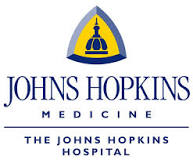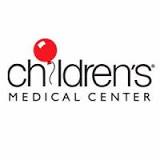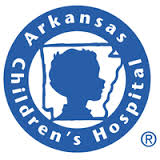Efficacy and Safety of Viaskin Peanut in Children With Immunoglobulin E (IgE)-Mediated Peanut Allergy
| Status: | Completed |
|---|---|
| Conditions: | Allergy, Allergy, Neurology |
| Therapuetic Areas: | Neurology, Otolaryngology |
| Healthy: | No |
| Age Range: | 4 - 11 |
| Updated: | 3/7/2019 |
| Start Date: | December 2015 |
| End Date: | August 18, 2017 |
A Double-blind, Placebo-controlled, Randomized Phase 3 Pivotal Trial to Assess the Efficacy and Safety of Peanut Epicutaneous Immunotherapy With Viaskin Peanut in Peanut-allergic Children
The PEPITES study evaluates the efficacy and safety of Viaskin Peanut 250 µg peanut protein
to induce desensitization to peanut in peanut-allergic children 4 through 11 years of age
after a 12-month treatment by epicutaneous immunotherapy (EPIT).
to induce desensitization to peanut in peanut-allergic children 4 through 11 years of age
after a 12-month treatment by epicutaneous immunotherapy (EPIT).
Main Inclusion Criteria:
1. Male or female children aged 4 through 11 years;
2. Physician-diagnosis of peanut allergy or children with a well documented medical
history of IgE-mediated symptoms after ingestion of peanut and currently following a
strict peanut-free diet, but without a physician diagnosis;
3. Peanut-specific IgE level (ImmunoCAP system) >0.7 kU/L;
4. Positive peanut skin prick test (SPT) with a largest wheal diameter:
- ≥6 mm for children 4 through 5 years of age at Visit 1,
- ≥8 mm for children 6 years and above at Visit 1;
5. Positive DBPCFC at ≤300 mg peanut protein.
Main Exclusion Criteria:
1. History of severe anaphylaxis to peanut with any of the following symptoms:
hypotension, hypoxia, neurological compromise (collapse, loss of consciousness or
incontinence);
2. Generalized dermatologic disease
3. Diagnosis of mast cell disorders, including mastocytosis or uricaria pigmentosa as
well as hereditary or idiopathic angioedema;
4. Diagnosis of asthma that fulfills any of the following criteria:
- Uncontrolled persistent asthma as defined by National Asthma Education and
Prevention Program Asthma guidelines 2007 or by Global Initiative for Asthma
guidelines 2015,
- Asthma treated with either a high daily high dose of inhaled corticosteroid or
with a combination therapy of a medium or high daily dose of inhaled
corticosteroid with a long acting inhaled β2 agonist or with a combination
therapy of a high daily dose of inhaled corticosteroid with a long acting inhaled
β2 agonist. Asthmatic subjects treated with a medium daily dose of inhaled
corticosteroids are eligible. Intermittent asthmatic subjects who require
intermittent use of inhaled corticosteroids for rescue are also eligible,
- Two or more systemic corticosteroid courses for asthma in the past year or 1 oral
corticosteroid course for asthma within 3 months prior to Visit 1, or during
screening period,
- Prior intubation/mechanical ventilation for asthma within 1 year prior to Visit
1, or during screening;
5. Receiving β-blocking agents, angiotensin-converting enzyme inhibitors,
angiotensin-receptor blockers, calcium channel blockers or tricyclic antidepressant
therapy;
6. Received anti-tumor necrosis factor drugs or anti-IgE drugs (such as omalizumab) or
any biologic immunomodulatory therapy within 1 year prior to Visit 1, during screening
period or during study participation;
7. Use of systemic long-acting corticosteroids within 12 weeks prior to Visit 1 and/or
use of systemic short-acting corticosteroids within 4 weeks prior to Visit 1 or during
screening;
8. Prior or concomitant history of any immunotherapy to any food;
9. Receiving or planning to receive any aeroallergen immunotherapy during their
participation in the study. Aeroallergen immunotherapy must be discontinued at the
time of Visit 1;
10. Any disorder in which epinephrine is contraindicated such as coronary artery disease,
uncontrolled hypertension, or serious ventricular arrhythmias.
We found this trial at
18
sites
Seattle, Washington 98105
Principal Investigator: Stephen Tilles, MD
Phone: 206-525-5520
Click here to add this to my saved trials
185 Cambridge Street
Boston, Massachusetts 02114
Boston, Massachusetts 02114
617-724-5200

Principal Investigator: Wayne Shreffler, MD
Phone: 617-726-6147
Click here to add this to my saved trials
3333 Burnet Avenue # Mlc3008
Cincinnati, Ohio 45229
Cincinnati, Ohio 45229
1-513-636-4200

Principal Investigator: Amal Assa'ad, MD
Phone: 513-636-6771
Cincinnati Children's Hospital Medical Center Patients and families from across the region and around the...
Click here to add this to my saved trials
South 34th Street
Philadelphia, Pennsylvania 19104
Philadelphia, Pennsylvania 19104
215-590-1000

Principal Investigator: Terri Brown-Whitehorn, MD
Phone: 215-590-2549
Children's Hospital of Philadelphia Since its start in 1855 as the nation's first hospital devoted...
Click here to add this to my saved trials
291 Campus Dr
Stanford, California 94305
Stanford, California 94305
(650) 725-3900

Principal Investigator: Sharon Chinthrajah, MD
Stanford University School of Medicine Vast in both its physical scale and its impact on...
Click here to add this to my saved trials
13123 E 16th Ave
Aurora, Colorado 80045
Aurora, Colorado 80045
(720) 777-1234

Principal Investigator: David M. Fleischer, MD
Phone: 720-777-2575
Children's Hospital Colorado At Children's Hospital Colorado, we see more, treat more and heal more...
Click here to add this to my saved trials
1800 Orleans St.
Baltimore, Maryland 21287
Baltimore, Maryland 21287
410-955-5000

Principal Investigator: Robert Wood, MD
Phone: 418-659-7741
Johns Hopkins Hospital Patients are the focus of everything we do at The Johns Hopkins...
Click here to add this to my saved trials
300 Longwood Ave
Boston, Massachusetts 02115
Boston, Massachusetts 02115
(617) 355-6000

Principal Investigator: Lynda Schneider, MD
Phone: 617-355-6180
Boston Children's Hospital Boston Children's Hospital is a 395-bed comprehensive center for pediatric health care....
Click here to add this to my saved trials
Click here to add this to my saved trials
Click here to add this to my saved trials
225 E Chicago Ave
Chicago, Illinois 60611
Chicago, Illinois 60611
(312) 227-4000

Principal Investigator: Jacqueline Pongracic, MD
Phone: 312-227-6474
Ann & Robert H. Lurie Children's Hospital of Chicago Ann & Robert H. Lurie Children
Click here to add this to my saved trials
1935 Medical District Dr
Dallas, Texas 75235
Dallas, Texas 75235
(214) 456-7000

Principal Investigator: Drew Bird, MD
Phone: 214-456-3971
Children's Medical Center of Dallas Children's Medical Center is private, not-for-profit, and is the fifth-largest...
Click here to add this to my saved trials
1400 Jackson St
Denver, Colorado 80206
Denver, Colorado 80206
(303) 388-4461

Principal Investigator: Donald Leung, MD
Phone: 303-398-1275
National Jewish Health National Jewish Health is known worldwide for treatment of patients with respiratory,...
Click here to add this to my saved trials
Houston, Texas
Principal Investigator: Davis Carla, MD
Phone: 832-825-4668
Click here to add this to my saved trials
1 Children's Way
Little Rock, Arkansas 72202
Little Rock, Arkansas 72202
(501) 364-1100

Principal Investigator: Stacie M. Jones, MD
Phone: 501-364-1060
Arkansas Children's Hospital Arkansas Children's Hospital (ACH) is the only pediatric medical center in Arkansas...
Click here to add this to my saved trials
New York, New York 10029
Principal Investigator: Anna Nowak-Wegrzyn, MD
Phone: 212-241-5548
Click here to add this to my saved trials
3414 Fifth Avenue
Pittsburgh, Pennsylvania 15213
Pittsburgh, Pennsylvania 15213
Principal Investigator: Todd Green, MD
Phone: 412-692-8296
Click here to add this to my saved trials
San Diego, California 92123
Principal Investigator: Stephanie Leonard, MD
Phone: 858-966-5961
Click here to add this to my saved trials